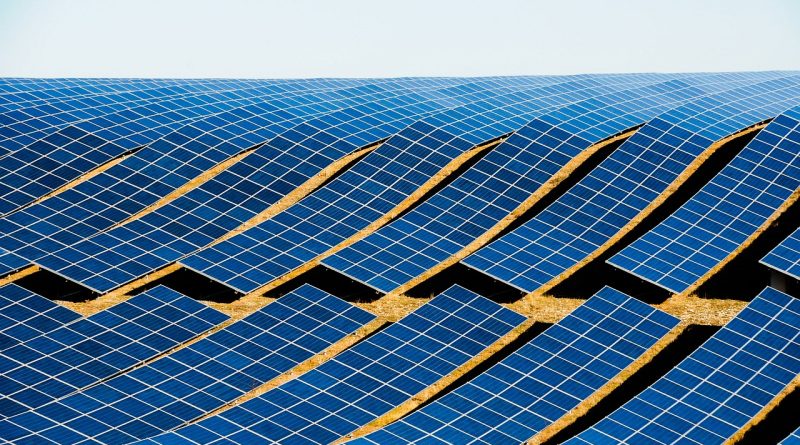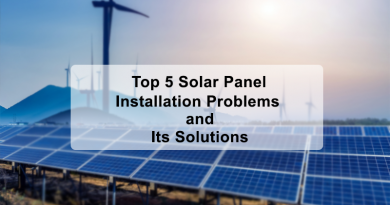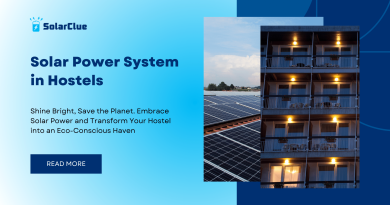On-Grid Solar Roof Systems: Harnessing Clean Energy
On-grid solar roof systems have revolutionized the way we harness and utilize solar energy. With the increasing global concern for renewable energy sources, solar power has emerged as a sustainable and eco-friendly solution. On-grid solar roof systems, also known as grid-tied solar systems, are a popular choice among homeowners and businesses due to their ability to generate clean energy and save costs. This blog explores the benefits, components, and working of on-grid solar roof systems, shedding light on why they are a smart choice for those seeking to embrace solar power.
Table of Contents
The Components of an On-Grid Solar Roof System
An on-grid solar roof system consists of several key components that work together to generate and distribute solar energy efficiently:
1. Solar Panels: The foundation of an on-grid solar roof system is the solar panels, which convert sunlight into electricity. These panels are typically made of silicon cells and are arranged in arrays to capture as much sunlight as possible. The number of panels required depends on the energy needs of the consumer.
2. Inverter: The inverter is responsible for converting the direct current (DC) generated by the solar panels into alternating current (AC), which is suitable for use by household appliances and the electrical grid. Inverters are usually installed near the main electrical panel.
3. Mounting System: To maximize sunlight exposure, solar panels are mounted on rooftops or open areas using robust and secure mounting systems. These systems are designed to withstand various weather conditions and ensure optimal panel tilt and orientation.
4. Electrical Meter: An essential component of the on-grid solar roof system is the electrical meter, which measures the amount of electricity consumed and the surplus energy generated by the system. This meter enables accurate tracking of the energy produced and consumed.
5. Electrical Grid Connection: On-grid solar roof systems are connected to the electrical grid, allowing surplus electricity to be sent back to the grid. This connection enables homeowners to receive credit for the excess energy produced, which can be used to offset future electricity bills.
Working of an On-Grid Solar Roof System
Understanding the working of an on-grid solar roof system is crucial for maximizing its benefits. Here’s a step-by-step guide to how these systems operate:
1. Solar Panel Absorption: When sunlight strikes the solar panels, the photovoltaic cells within the panels absorb the light. These cells consist of layers of semiconductor material that release electrons when exposed to photons, initiating the production of direct current (DC) electricity.
2. Inverter Conversion: The DC electricity generated by the solar panels travels to the inverter, where it is transformed into alternating current (AC) electricity, suitable for powering household appliances and the electrical grid.
3. Energy Consumption: The on-grid solar roof system supplies the AC electricity directly to the electrical appliances within the building. This reduces the need for electricity from the grid, resulting in cost savings for the consumer.
4. Surplus Energy and Net Metering: If the on-grid solar roof system produces more electricity than the building requires, the surplus energy is sent back to the electrical grid using the grid connection. Net metering comes into play here, allowing consumers to be credited for the excess energy generated. This credit can be utilized during times when the solar panels produce less electricity, such as on cloudy days or at night.
Benefits of On-Grid Solar Roof Systems
Investing in an on-grid solar roof system offers numerous benefits for homeowners and businesses alike, making it an attractive choice in the move towards renewable energy sources. Some of the key benefits are:
1. Cost Savings: By generating their electricity, solar roof system owners can significantly reduce their electricity bills. When surplus energy is sent back to the grid, consumers receive credits that further offset their electricity expenses.
2. Environmentally Friendly: On-grid solar roof systems reduce the reliance on fossil fuels and contribute to a cleaner, greener environment. They help reduce carbon emissions and dependence on non-renewable energy sources, thereby mitigating the negative impact on the environment.
3. Return on Investment: While there is an initial investment involved in installing an on-grid solar roof system, these systems have a relatively short payback period. With decreasing costs of solar technology and potential government incentives, homeowners can enjoy a return on their investment in a relatively short span of time.
4. Grid Stability: By incorporating on-grid solar roof systems into the electrical grid, the stability and reliability of the overall grid are enhanced. The distributed nature of these systems reduces strain on traditional power plants and transmission infrastructure, leading to a more resilient and efficient grid.
Conclusion
Unlock the potential of sustainable and cost-effective energy with on-grid solar roof systems – a compelling solution for those eager to embrace renewable sources. Delve into the components and working principles that shape these systems, empowering yourself to make informed decisions. The myriad benefits, such as cost savings, environmental friendliness, return on investment, and enhanced grid stability, position on-grid solar roof systems as the intelligent choice for homeowners and businesses alike. By embracing solar power through these systems, not only do you trim your electricity bills, but you also become a vital contributor to the creation of a more sustainable future. Choose SolarClue® to guide you on this path towards a brighter and greener energy landscape.
Frequently Asked Questions
On-grid solar roof systems are solar power setups connected to the utility grid, providing clean energy and reducing reliance on traditional power sources.
Solar panels on the roof generate electricity, and excess energy is fed back to the grid, contributing to lower energy bills.
Benefits include cost savings, reduced carbon footprint, and potential incentives through net metering.
In most cases, yes. Consult with professionals to assess roof suitability and ensure compliance with local regulations.
Typically, on-grid systems do not store excess energy. Consider battery storage solutions for energy independence during outages.
Yes, on-grid systems are scalable and adaptable for commercial use, providing businesses with cost-effective and sustainable energy solutions.
Net metering allows users to receive credits for surplus energy sent back to the grid, offsetting energy consumption costs.
Installation times vary but typically range from a few days to a couple of weeks, depending on system size and complexity.
Regular inspections and cleaning are recommended to ensure optimal performance. On-grid systems generally have lower maintenance needs.
Check with local authorities and utility providers for potential incentives, rebates, or tax credits available for adopting on-grid solar solutions.



